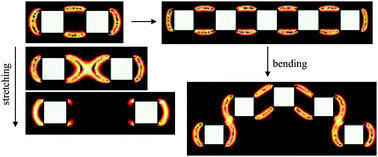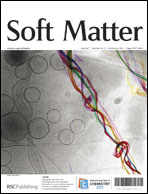Two dimensional texture simulations, based on the Landau-de Gennes equations of nematodynamics in the absence of flow, were carried out for nematics with embedded faceted binary and multiple particles using temperature, size, and density as topological control variables. The stable modes obtained from kinetic simulations are summarized in texture phase diagrams in terms of temperature, particle separation and particle size. The key novelty in 2D faceted particles is the presence of corners that are sources/sinks of disclination lines or active corner defects. Under close corner-to-corner proximity, disclination lines form inter- or intra- particle links, while under larger distances, surface defects decorate the corners. This generic geometric behaviour is modulated by temperature since the line tension of disclinations decreases with increasing temperature. The characteristic texture diagrams show that for nanoparticles, increasing particle separation results in a disclination mode sequence of linked particles, cross-linked particles, and intra-particle disclinations. For colloidal particles, increasing size results in a mode sequence of linked particles and isolated particles with corner defects. For intermediate particle size, a continuous evolution of the phase diagrams from the former to the latter is demonstrated. At low temperatures, increasing interparticle distances leads to a defect breakage at a critical value independent of particle size. Multimer particle assemblies form stable filaments via a corner-to-corner interparticle disclination linkage mechanism. The stability of the multimers to bending is characterized using curvature as a topological control variable. As stretching-driven instabilities in binary particles give rise to surface defects modes, bending-driven instabilities give rise also to multi-particle rings with corner decorated surface defects. The integrated texture phase diagrams, topological transitions, tension and bending-driven instabilities demonstrate the potential functionality of faceted particle liquid crystal nanocomposites.


 Please wait while we load your content...
Please wait while we load your content...